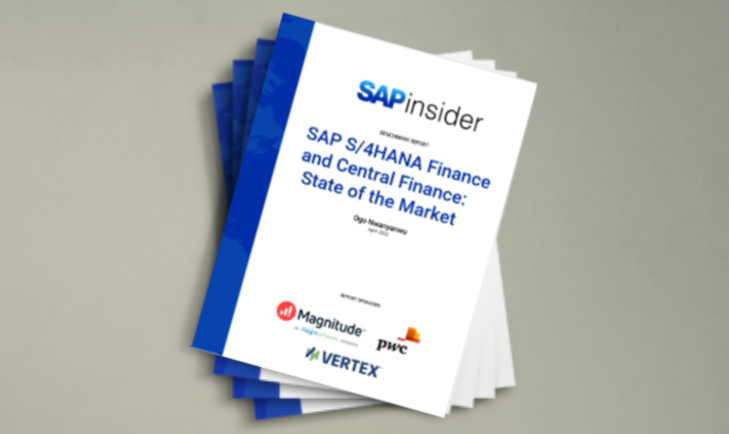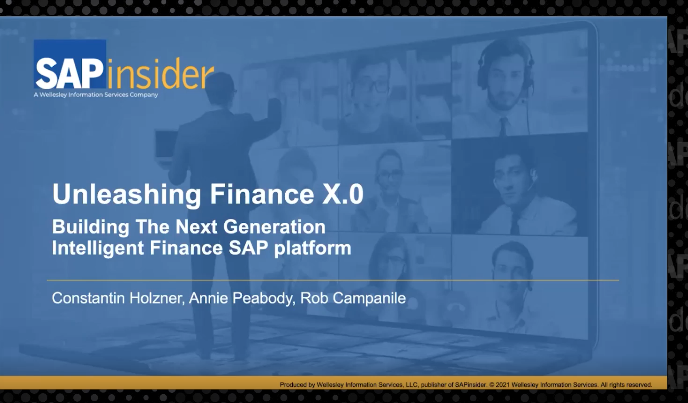Transforming Finance
With Today's Technology, SAP and Partners Drive Innovation for Customers
If I had asked people what they wanted, they would have said a faster horse.
This quote, often attributed to Henry Ford, has sparked much debate beyond whether the visionary of the mass-produced automobile ever actually uttered the phrase. Was Ford being dismissive of customers, or was he making a larger point about true innovation requiring new ways of thinking?
My view is the latter, and not just because there weren’t many customer focus groups around in the early 20th century. Whether Ford said it or not, the fact remains that he did have a singular vision for doing something in a new way. While he didn’t invent the car, nor did he invent the assembly line, he did foresee the market for an inexpensive automobile for everyday use and he fulfilled a demand of his own creation.
The idea behind the famous quote holds true today in the world of information technology. Making an existing process faster by marginally improving the solution that runs it accomplishes little if the process itself is outdated, or was built as a workaround to bygone technological limits.
In financial planning, for example, a company might have dozens of processes that center around a four-week budgeting cycle because that’s what technology allowed when the processes were created. As technology matured, the processes remained not because of their inherent value, but because by then they had become ingrained as part of a company’s culture; no one knew any better. Shortening that budgeting cycle with better processing power is one thing, but imagine what could be done if that same company focused its efforts on developing entirely new processes.
Just as mass use of the automobile did far more than displace the horse, so too can embracing the transformative power of new technology free a company to change processes and even business models to pursue an entirely new direction. The question companies must ask when they set out on a transformational journey is not how to get there faster, but how to discover an entirely new road. Think of the latest innovations and advancements in cloud, mobile, social, big data, and real-time analytics as digital maps to help guide the journey; to steer in the right direction you need to decipher what those digital clues mean. What can a business accomplish if there are no wait cycles, all of the information you need is at your fingertips all the time, and everything is instantly connected?
Technology has reached a maturation level where this scenario has become reality. The tools are there for any company to leverage and take this transformative step. For example, SAP’s finance and analytics portfolios include such innovative solutions as SAP S/4HANA Finance, SAP Integrated Business Planning, and SAP Cloud for Analytics, all of which run on SAP HANA to provide real-time information and instant insights, a valuable currency in the digital economy.
Climb on the Shoulders of Partners
Of course, innovation doesn’t happen overnight and unlike the go-it-alone approach implied by Ford’s statement, innovation doesn’t have to stem from a single stroke of genius. Rather, it often results from a collaborative effort that is facilitated by having the right platform and solutions in place and, in the case of a vast SAP ecosystem of knowledgeable partners, having trusted sources to turn to for specific industry expertise.
Developing a new way of thinking, then, is not restricted to internal efforts as companies race to differentiate themselves in a crowded field. By bringing consultants, developers, implementation partners, system integrators, and other stakeholders vested in their clients’ long-term prognosis for success into the fold, companies open more avenues for potential transformative opportunities.
The last thing a company wants is to make a significant investment in new technology only to have a finance department that from a process standpoint looks the same as it did 50 years ago, with yearly budgets, three-year strategic plans, and a general lack of fluidity that contrasts significantly with the leaps and bounds consumer technology has taken in just the last few years. This is where partners can help provide this next-level thinking, and use their industry expertise to assist companies in developing processes and business models that align with a dynamic, connected world — even helping companies start from scratch if need be.
The finance department that works with partners to adopt a customer-first approach while still providing governance, regularity, stability, and other solvency requirements will be the one that provides unprecedented value to the business.
Instead of a traditional business-first approach where processes exist to serve the company and its products, a new train of thought must take an outside-in, customer-first approach where the value of a process is defined by how well it serves the customer. The finance department that works with partners to adopt this approach while still providing governance, regularity, stability, and other solvency requirements will be the one that provides unprecedented value to the business, and a value that until recently was beyond the realm of what was possible.
Unlimited Possibilities
The possibilities really are limited only by imagination. Think of the variables in planning processes for various industries, from competitive price points to demand fluctuations to exchange rates. Whether retail, healthcare, or transportation just to name a few, it is not difficult to envision an endless array of applications that have the potential to impact an entire industry model. What if a retailer, for example, makes a move to a daily soft close in its financial reporting? Start with a clean slate and imagine what new business models could be created if dynamic purchasing and discounting were the norm, or if decisions at an individual customer level based on real-time information could be made before a customer walked in the door.
A rigid, inflexible system may have been the expectation a decade or two ago, but in the existing business climate the same system is like a heavy anchor weighing a company down and hindering its ability to compete on a global scale. Think about the instantaneous nature of the digital economy, and in this same light consider the potential consequences of not having real-time insight into cash flow. It is not difficult to see that staying with a monthly financial close could easily mean missing out on a new line of credit, and thus stopping an acquisition or a major investment in the starting blocks.
In a dynamic, connected digital economy these opportunities can arise at a fast and furious pace; it is now an inescapable part of doing business for companies both large and small. The technology exists to meet this challenge head-on, so now companies must look beyond technology to how they can engage internal and external stakeholders to transform their business.









